Overview
Fourth-Grade students in SFUSD engage in 100 minutes of weekly physical education instruction provided by a credentialed teacher. This may look like an average of three 35-minute classes per week or two 50-minute classes per week. While lesson structures vary, the overall design of the units remains consistent.
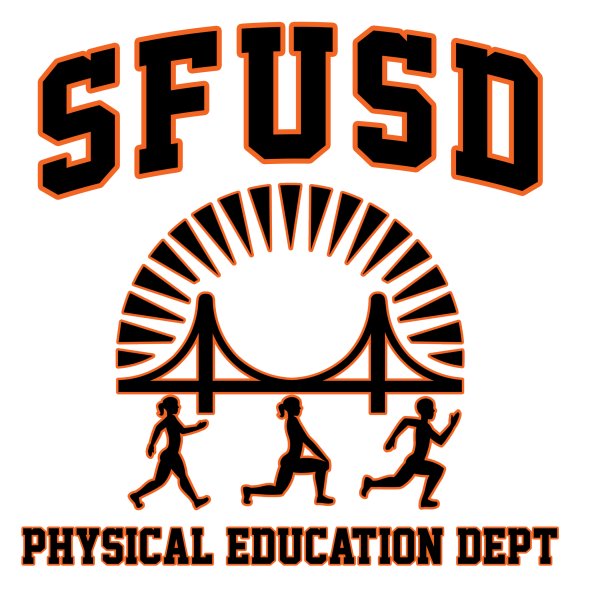
SFUSD Physical Education focuses on cardio fitness, social-emotional learning, and overall health by teaching units that prioritize maximum student engagement, motor skill and movement pattern development, creativity and exploration of movement, positive social interactions with peers, growth mindset skills, and development of physical literacy.
|
PHYSICAL EDUCATION - 100 MINS PER WEEK |
|
|---|---|
| 2 x 35-minute classes per week + 1 x 30-minute class per week |
2 x 50-minute classes per week |
35-minute PE Class Breakdown
| PHYSICAL EDUCATION |
35-MINUTE PE CLASS BREAKDOWN |
|---|---|
| Active Do Now |
2 mins: instant activity or warm-up |
| Introduction to Skill |
3 - 5 mins: whiteboard, visuals, demonstrations, and cues |
| Skill Practice: Individual/Partner |
10 - 15 min: learning opportunity, cue reinforcement, and feedback |
| Main Activity |
10 - 15 min: reinforcement of social and movement skills |
| Closure |
5-7 min: review cues and/or movement concepts |
| Components of A Good Lesson | |
50-minute PE Class Breakdown
| PHYSICAL EDUCATION |
50-MINUTE PE CLASS BREAKDOWN |
|---|---|
| Active Do Now |
2 mins: instant activity or warm-up |
| Introduction to Skill |
3 - 5 mins: whiteboard, visuals, demonstrations, and cues |
| Skill Practice: Individual |
5 - 10 min: learning opportunity, cue reinforcement, and feedback |
| Skill Practice: Partner/Small Group | 10 - 15 min: learning opportunity, cue reinforcement, and feedback |
| Main Activity |
10 - 15 min: reinforcement of social and movement skills |
| Closure |
5-7 min: review cues and/or movement concepts |
| Components of A Good Lesson | |
Priority Standards Link to this section
What students will know, what students will do, and what thinking skills students will develop to apply and transfer Physical Education understandings that endure within the discipline, leverage deeper understandings, and/or support readiness for success at the next grade level.
In Fourth Grade, focus on these critical areas:
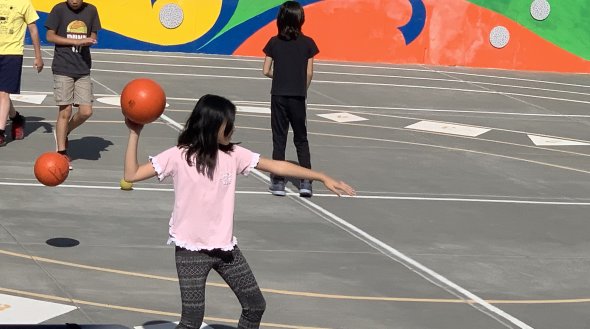
Motor Competency (psychomotor domain)
Demonstrating knowledge of concepts and motor skills by engaging in meaningful movement experiences - developing competence and confidence by participating in activities that are age and developmentally appropriate, challenging, socially engaging, personally relevant, and enjoyable.
- Throws and catches an object with a partner while both are moving
- Keeps a dribbled ball away from a defender
- Stops a kicked ball by trapping it with the foot
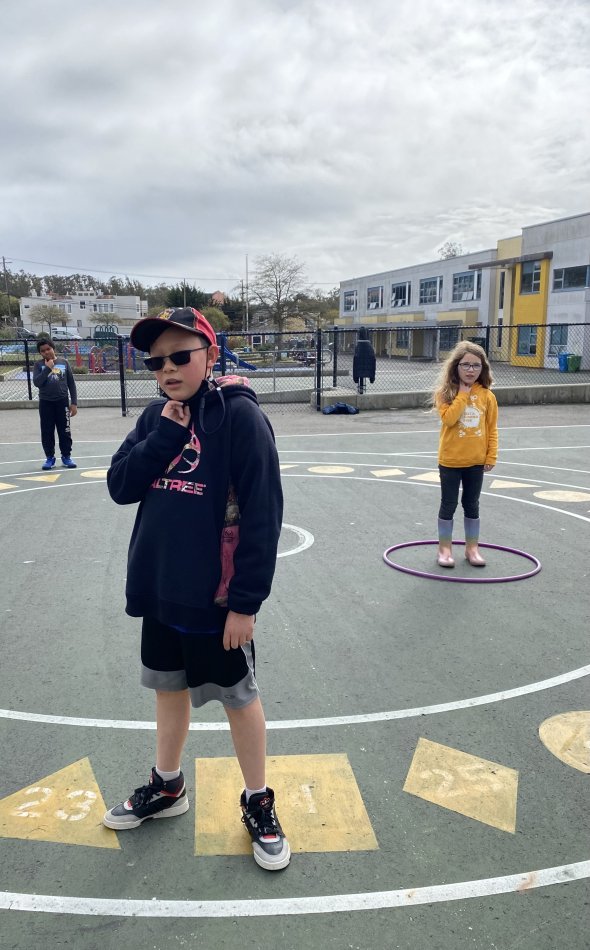
Making Meaning (cognitive domain)
Going beyond demonstrating knowledge of concepts and motor skills by being able to identify specific cues, understanding the “why” of movement or concepts, and reflecting on their movement experiences.
- Calculates heart rate for 10 and 15-second intervals
- Sets short-term goals for cardio endurance
- Identifies healthful choices for meals and snacks that help improve physical performance
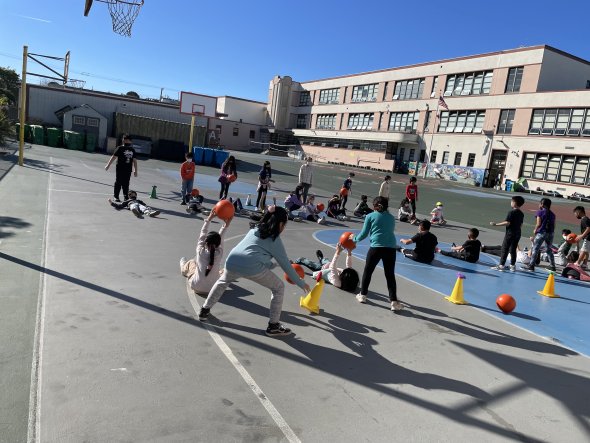
Social Responsibility (affective domain)
Developing their social and emotional well-being by experiencing meaningful and culturally affirming learning opportunities - learning to manage emotions, exhibit empathy and kindness for others, foster and maintain positive relationships, and develop social skills to manage various situations and problem-solve.
- Respond to winning and losing with dignity and respect
- Accepts responsibility for their own performance without blaming others
- Includes others in physical activities and respects individual differences in skill and motivation
Instruction: Signature Elements Link to this section
Below are signature elements of SFUSD Physical Education instruction that students should experience regularly throughout Fourth Grade as they develop personal physical literacy.
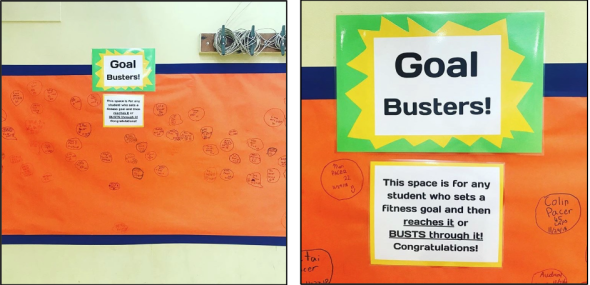
Introduction to Goal Setting
In fourth grade, students will begin working toward personal physical activity goals. They will learn fundamental goal-setting principles and develop action plans that will help them achieve their goals. These lifelong skills help students to build grit and determination within themselves as they work towards any goal they set for themselves, both while in PE and throughout their lives.
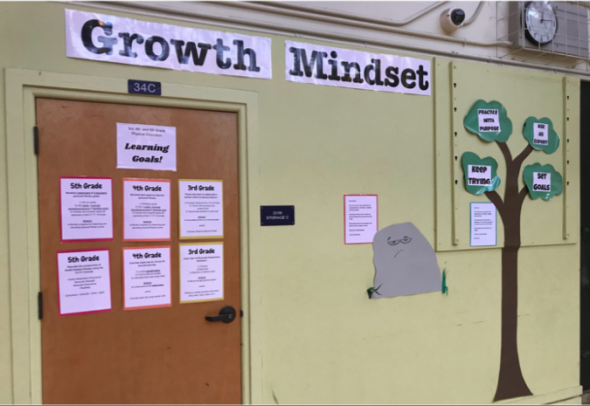
Growth Mindset
Integral to students’ experiences in Physical Education is the work they will do in developing a Growth Mindset. Fourth Graders will participate in lessons embedded with growth mindset concepts and strategies. Students will learn to use positive self-talk, constructive feedback, and the power of “yet,” to build determination and resilience when experiencing challenges both in and out of PE class.
5K- Fun Run Experience
Fourth-grade students will have the opportunity to run a 5K race. Students will work over the course of two months to increase their cardiorespiratory endurance, through consistent training and goal-setting in their PE classes. Participating and training for this event helps promote improved physical fitness and teaches students important fitness skills they can take with them for a lifetime.
Materials
Below are items you should have to support your students' physical education instruction. If you are missing anything from the list, please first contact your site administrator or designated support. If they are unable to resolve the issue promptly, please contact Desirae Feria from the SFUSD Physical Education Team.
Beginning of the Year Self-Checklist for K-5 Classroom Teachers
The intent of this Self-Checklist is to uplift basic Physical Education building blocks that every K-5 teacher ought to know.
K- 5 SFUSD Physical Education Library of Books
Check out our selection of books that illustrate growth mindset, movement, anatomy, inspiring people, health, and nutrition. The images are linked to either a virtual read-aloud or description details.
Units
| Unit Resources | Description | |
|---|---|---|
| Unit Zero - Fourth-Grade Physical Education | Which PE lesson are you going to teach on the 1st day? Start the school year off by establishing a positive PE classroom environment. Unit Zero provides 3-weeks of lessons that focus on student connections, a sense of self, identity, and a sense of community. What to teach after these lessons? Contact your PE Specialist and make a plan. | |
| District Physical Education Curriculum: Fourth Grade |
SFUSD’s district-adopted Physical Education Curriculum is intended for K-5 Classroom Teachers. In Kindergarten this standards-based curriculum (CA State PE Standards) focuses on motor skills, cognitive concepts, cooperative activities, exploration, and thematic-based lessons. | |
| OPEN Physical Education Curriculum by US Games | OPEN Physical Education Curriculum is written by and for Physical Educators across the nation. This standards-based curriculum (National SHAPE America Standards) clusters grades 3-5 lesson activities together. |
Planning Guide
Report Card Scope & Sequence (Year-at-a-Glance)
This is a suggested scope and sequence to address report card benchmarks by grade level. Collaborate with your PE Specialist regarding shared responsibilities and best practices.
Report Card Materials - Physical Education
Fourth-grade report card expectations, lessons, and assessment tools for Physical Education.
Reflection Questions Link to this section
- How are students' developmental needs, communities, and experiences being reflected and honored, or how could they be?
- What opportunities do you see for developing equitable access & demand, inquiry, collaboration, and assessment for learning?
- What are the implications for your own practice? What strengths can you build upon? What will you do first?
Want More?
Standards
- Physical Education Framework for California Public Schools
- SFUSD Common Core Connections to Physical Education
More Resources
- SFUSD Elementary Physical Education Landing Page
- SFUSD Teaching English Learners in Physical Education
- SFUSD Physical Education Website
- SFUSD Quality Physical Education Indicators
- SFUSD Physical Education Master Plan (SFUSD Board Resolution. PE Master Plan No. 95-26A2)
- CAHPERD Website (CA Physical Education website)
- SHAPE America Website (National Physical Education Website)
- SFUSD Board Resolution 6142.7
- Wellness Policy - PE Section
Contact the Physical Education Team:
- Desirae Feria, Supervisor Elementary Physical Education
- Demetria Chi, K-5 Physical Education Content Specialist
- Gloria Sagastume, K-5 Physical Education Content Specialist
This page was last updated on May 17, 2023

